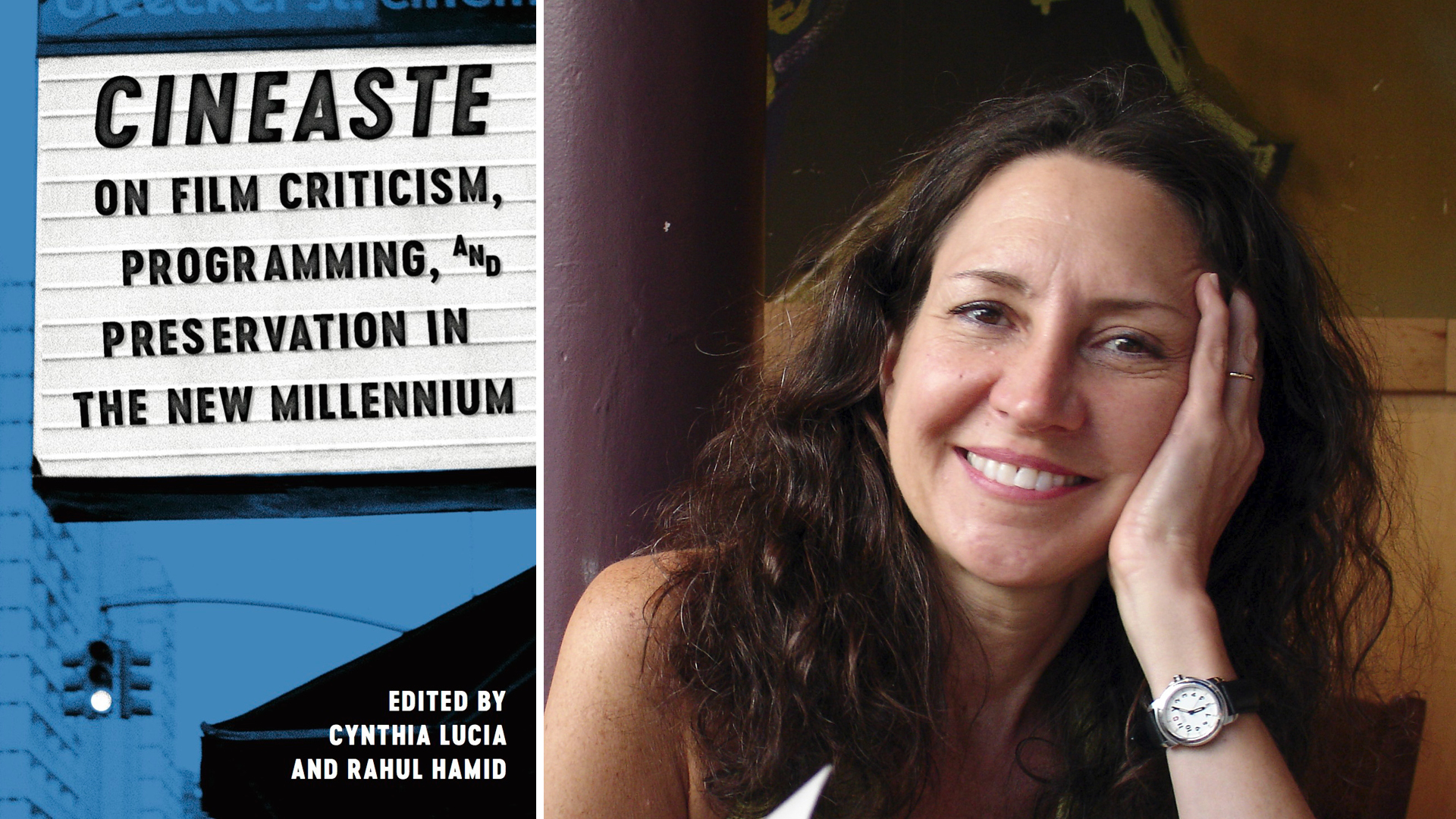Friday, Feb 16, 2018
Cynthia Lucia is the co-editor of a collection from top film magazine 'Cineaste'
by Robert Leitner ’17
Technology has transformed nearly every aspect of film — the way it is programmed, preserved and even criticized. Cynthia Lucia, a Rider University English professor and director of the Film and Media Studies Program, is the co-editor of a new book that examines this often paradoxical transformation.
Digital technology has broadened access to film while reducing use of the original medium, celluloid film. The internet allows for a diverse array of discourse but snatched authority from print publications. Lucia's book, Cineaste on Film Criticism, Programming, and Preservation in the New Millennium, addresses these and other topics through a compilation of symposia and interviews with the top film critics, programmers, and preservationists in the United States and beyond.
This book helps to mark the magazine’s 50th anniversary of Cineaste, a leading film magazine with major importance to scholars and others with a serious interest in film. Lucia has been on the editorial board for Cineaste for more than two decades. At Rider, she has made it her goal to create a rich and vibrant film culture on campus. She created a cinema studies concentration for English majors and minors, and her combined efforts with faculty members and students have resulted in an annual film symposium and a student club, the Alternative Film Club.
Lucia recently took the time to discuss her interests and how the concepts of her new book affects film critics, enthusiasts and students.
What started your interest in film studies?
As an undergraduate and graduate student, I majored in English and was always drawn to the study of literature. The close relationship between film and literature initiated my interest in film studies, but I also was drawn to the idea of visual storytelling and how so much can be conveyed without the use of language — which is ironic because the love of language is what drew me to literature in the first place and continues to fuel my interest.
Can you explain how technology has changed criticism, programming and preservation of film?
The seemingly limitless digital availability of film and the explosion of internet publishing venues have both expanded the field and, in some ways, narrowed it. Many print publications have shut down and paid positions in film criticism are much harder to find.
Digital film production has provided greater access to filmmakers, yet the absence of a “material” image poses challenges for film preservationists when they confront films shot directly on digital formats, given constantly changing platforms.
In terms of exhibition, digitization has provided many more viewers and scholars with access to films previously available only in far-flung archives, yet the widespread theatrical exhibition of film on digital formats places pressure on repertory programmers devoted to screening films as originally intended to be shown.
What does this change mean for the movie critic?
Since most films are shot on digital today, it means that critics can often access advance screenings via links and watch films on a range of devices, but it also means that sound and image quality may not be exactly as the filmmaker intended — so critics must be vigilant and, as much as possible, get out to advance press screenings. As for actual venues for writing, the internet has “democratized” film criticism as many have pointed out, but a great quantity of sources does not necessarily line up with greater quality of content.
How does this change affect the regular movie enthusiast?
Movie enthusiasts have many more films available to them thanks to digitization, and they can watch these films in so many ways. When it comes to films originally shot on celluloid, however, it means that, unless they visit a repertory theater dedicated to original format exhibition, they will not see exactly what was artistically intended.
How has this paradox changed the way students study film?
Students thankfully have much greater access to films and critical and scholarly writings on film than ever before, but they need to keep in mind the limitations earlier noted and make careful, informed decisions about the quality and legitimacy of what they read.

